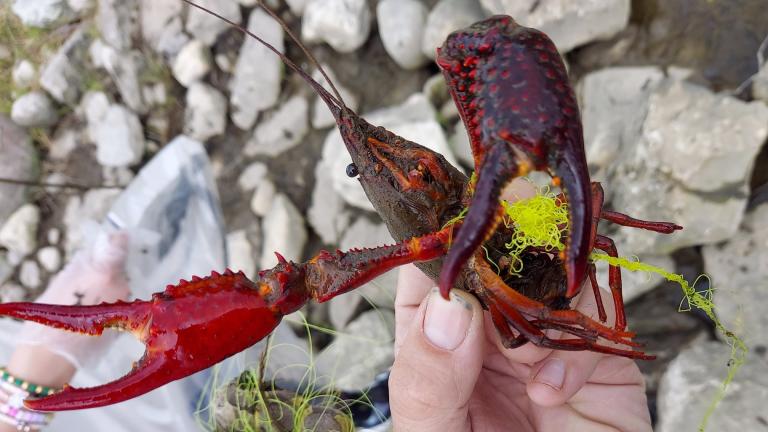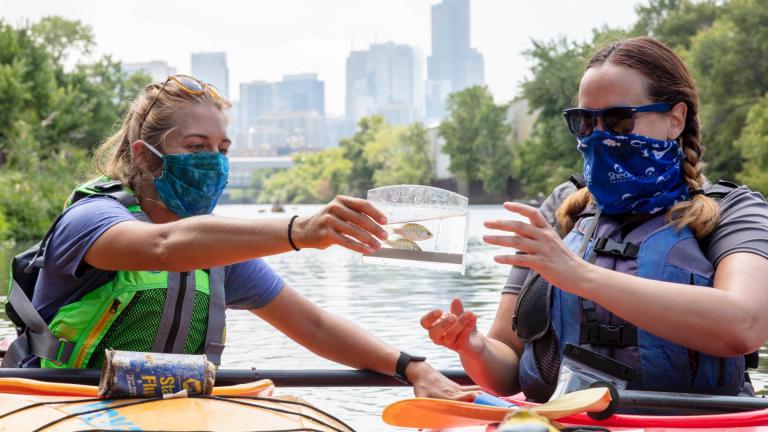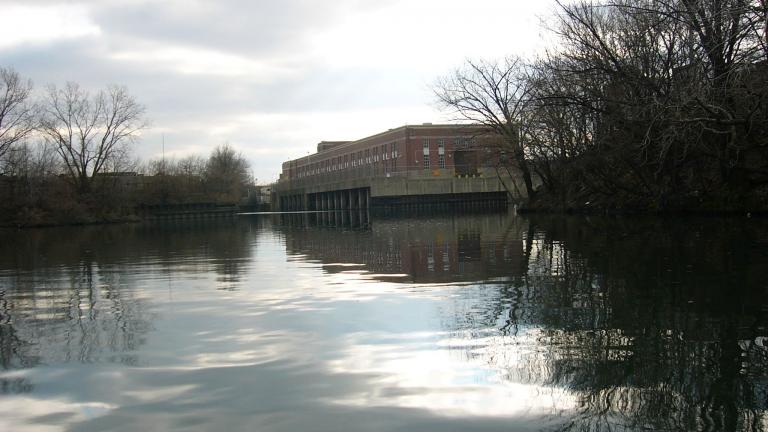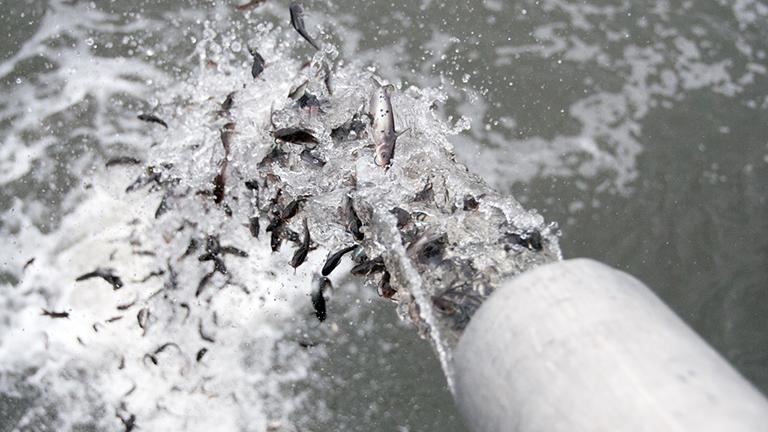The nonprofit A Long Swim is planning an open water swim event in the Chicago River this fall. Proceeds will support ALS research and Learn to Swim, a program that teaches children in underserved communities how to swim.
margaret frisbie
Any development on the Chicago River should address concerns about climate resilience, biodiversity, sustainability and pollution, advocates say. "It would be an enormous mistake to not take that seriously," said Margaret Frisbie, of Friends of the Chicago River.
This Crayfish Was Rescued During Chicago River Day Cleanup, But in a Major Plot Twist, It’s Invasive
In its 30-year history, Friends of the Chicago River’s annual cleanup has evolved from a focus on litter to invasive species. An invasive crayfish pulled from the river over the weekend highlights the work to be done.
If a casino is coming to the riverfront, publicly accessible open green space should be a priority, as well as considerations for wildlife habitat, environmental advocates say. And the buildings themselves should be held to the highest standards of sustainability and climate resiliency.
Dyeing the Chicago River green on St. Patrick’s Day has been a tradition since the 1960s. But in 2020 and 2021, rogues extended the practice to a section of the North Branch, a bridge too far for environmentalists.
Back in the 1980s, the number of fish species found in the Chicago River could be counted on a single hand. Today, that number is up to 60 species, an increase in diversity that can be directly attributed to a decrease in wastewater pollutants, according to a new study from the Shedd Aquarium.
The U.S. Army Corps of Engineers has allocated $225.8 million to the Brandon Road Lock and Dam invasive carp barrier. The funds will complete the planning and engineering phase of the project.
Congress authorized a plan from the Army Corps of Engineers to restore the Chicago River’s South Fork, a 1.25-mile stretch more familiarly known as Bubbly Creek. Now actual dollars need to follow.
The organization had to cancel its Chicago River Day cleanup due to the coronavirus. Instead of bringing thousands of volunteers together for a one-day event, the new Summer Challenge encourages people to pick up litter in their neighborhoods.
Two organizations have joined forces to release nearly 200,000 fish into the Chicago and Calumet waterways over the past two years.











